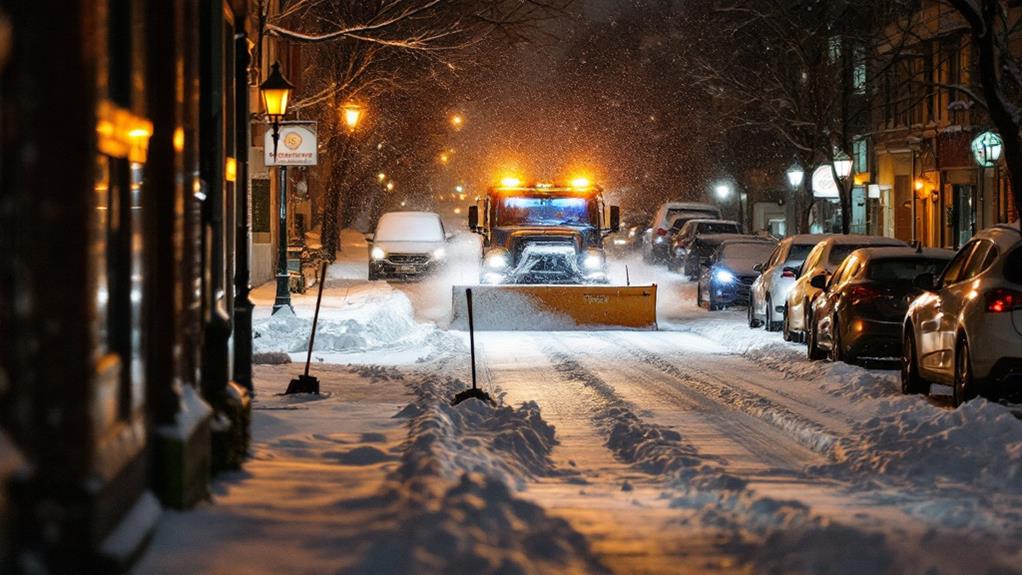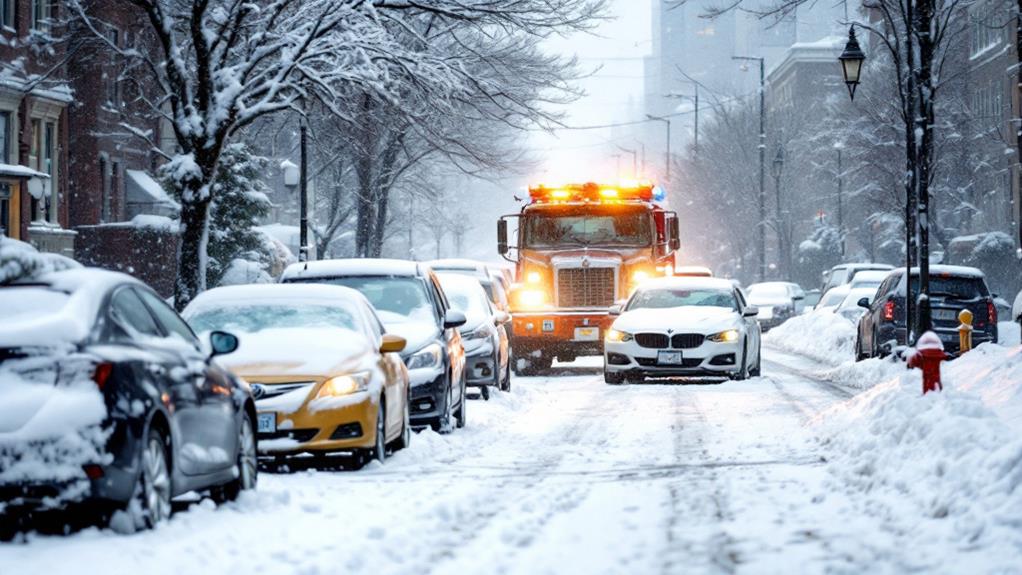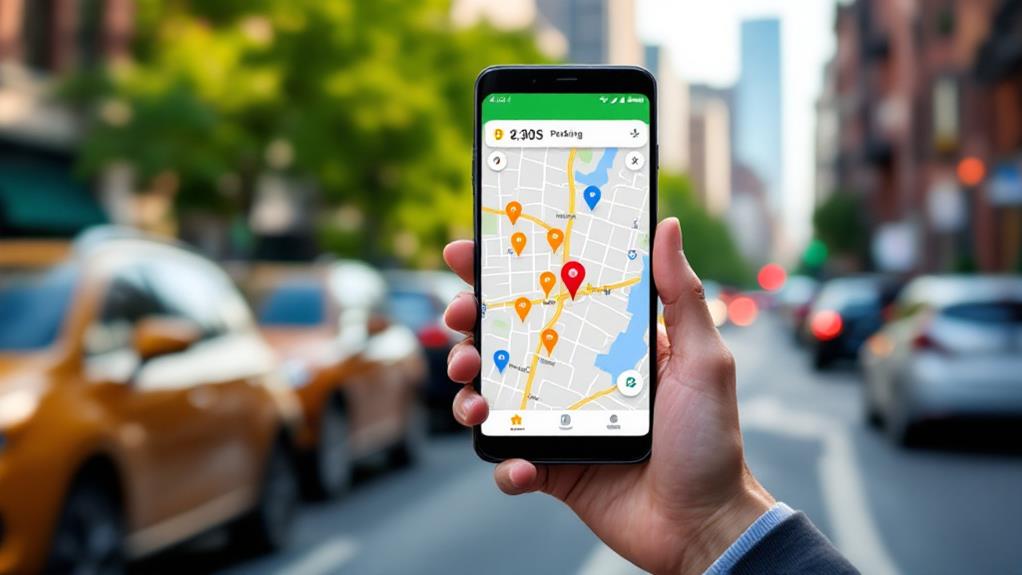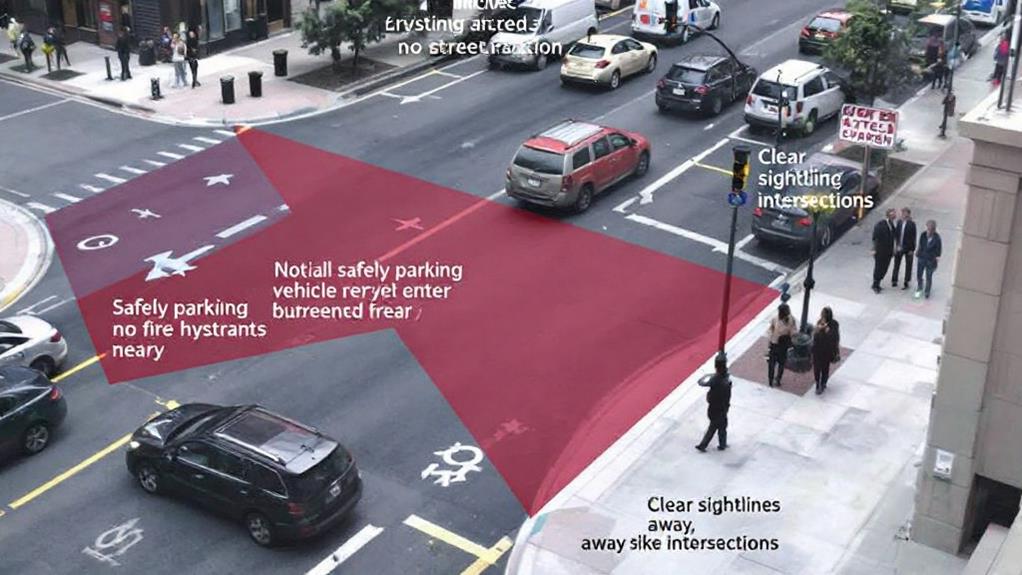Street Parking During Winter: Tips to Avoid Trouble

During winter, street parking requires extra vigilance to avoid trouble. Pay attention to snow emergency declarations and alternate-side parking rules, which help facilitate snow removal. Always check for updated regulations and visible parking signs, as snowbanks can obscure important information. Keep your vehicle fully cleared of snow and ice, and avoid parking near intersections or on snow-covered hills. Equip yourself with essential winter parking supplies like a shovel, ice melt, and scraper. By following these tips, you'll reduce the risk of towing, fines, and accidents. Explore further to uncover more strategies for maneuvering winter parking challenges.
Snow Emergency Declarations
Cities often declare snow emergencies when heavy snowfall is expected, triggering special parking regulations. During these Winter Weather events, you'll need to be aware of how these declarations affect your car's parking situation. Snow emergencies typically prohibit parking on major roads to allow for efficient Snow Removal and emergency vehicle access.
To avoid getting ticketed or towed, you'll need to pay close attention to local ordinances. Many cities implement alternate-side parking rules during snow emergencies. This means you can only park on one side of the street on designated days, allowing plows to clear snow and ice more effectively. It's indispensable to make sure you're following these rules to keep parking spots accessible for everyone.
Before Winter hits, familiarize yourself with your city's snow emergency procedures. Know which streets are affected and when parking restrictions go into effect. Set up alerts on your phone or check local news regularly during snowy periods. By staying informed and moving your car at the right time, you'll avoid fines and help keep roads clear. Don't forget to keep ice melt in your car for emergencies, too.
Alternate-Side Parking Rules
A jigsaw puzzle of parking spaces emerges during winter in many urban areas. As snow and ice blanket the streets, cities implement alternate-side parking rules to guarantee efficient snow removal. During the winter months, you'll need to be vigilant about where you leave your car to avoid hefty fines and potential towing.
Alternate-side parking rules typically require you to park on the odd-numbered side of the street on odd calendar days and the even-numbered side on even days. This system allows plows to clear snow effectively, maintaining safe road conditions. It's vital to familiarize yourself with your local regulations, as they can vary by city.
Ignoring these rules can lead to more than just a ticket. Your car might be towed, leaving you stranded in icy conditions and facing a time-consuming and costly retrieval process. To avoid trouble, always check which side of the street parking is allowed before leaving your vehicle. Consider using parking lots when available, especially during this challenging time of year. By following alternate-side parking rules, you'll contribute to smoother snow removal operations and keep your car safe from potential tickets or towing.
Snow Removal and Street Cleaning

While alternate-side parking rules help facilitate snow removal, they're just one piece of the winter parking puzzle. Cities implement strict parking restrictions during snow emergencies to vital street cleaning and plowing. You'll need to stay informed about local ordinances to avoid ticketing and towing.
To comply with snow removal requirements, you may need to shovel out your driveway or have it plowed. Remember that parking too close to intersections can create safety hazards by reducing visibility due to snowbanks. It's essential to follow all parking restrictions during winter to enable effective snow clearing operations and maintain safety for all road users.
Check local ordinances for specific snow removal parking rules. Be prepared to move your vehicle during designated snow emergency periods. Ensure your driveway is cleared to comply with snow removal requirements. Avoid parking near intersections to maintain visibility. Stay informed about parking restrictions to prevent ticketing and towing.
Avoiding Towing and Penalties
Numerous drivers face the risk of towing and hefty penalties during winter if they're not vigilant about snow emergency parking rules. To avoid these costly consequences, you need to stay informed about local regulations and strictly adhere to them. Pay close attention to when parking is prohibited for snow removal, as enforcement is typically rigorous to guarantee safe and efficient clearing of streets.
If you neglect these rules, you may find your vehicle towed, leading to a time-consuming and expensive retrieval process. Storage fees and ticket fines can quickly add up to hundreds of dollars, making it essential to comply with parking restrictions. Remember, strict enforcement of snow emergency parking rules is necessary for everyone's safety and to allow for effective snow removal operations.
To protect yourself from these parking penalties, always check local ordinances before parking on the street during winter. Be prepared to move your vehicle when required, and stay updated on weather forecasts and snow emergency declarations. By being proactive and following the rules, you'll avoid the hassle of a towed vehicle and save yourself from costly retrieval fees and additional fines.
Common Winter Parking Mistakes

Even experienced drivers can fall prey to common winter parking mistakes. Don't rely on past parking experiences during snowfalls, as rules can change with the weather. Always check for updated regulations and be aware that snowbanks and piles may obscure parking signs, reducing visibility. It's vital to fully clear your vehicle of snow and ice before driving, as failing to do so can create a hazard for other motorists.
When parking in lots, be mindful of space. Snow can make it challenging to judge distances, leading to accidentally taking up two spots. Additionally, parking on snow-covered hills can be risky, so consider alternative spots when possible.
To avoid these common winter parking pitfalls, keep the following tips in mind:
- Always check for updated parking regulations
- Look carefully for signs that may be hidden by snow piles
- Clear your entire vehicle of snow and ice before driving
- Take extra care when parking in lots to stay within one spot
- Avoid parking on steep, snow-covered hills when possible
Navigating Snowbanks and Visibility
Snowbanks often present significant challenges for winter parking, particularly when it comes to visibility. When you're searching for parking spots, be aware that snow banks can obscure important parking signs and meters. Take a moment to brush off any snow-covered signs to guarantee you're aware of the applicable parking rules. This simple step can save you from potential tickets or towing.
Be cautious when parking near intersections, as reduced visibility from snowbanks increases the risk of accidents. Always leave ample space and avoid parking too close to these areas. Remember to engage your parking brake, especially on sloped streets, to prevent your vehicle from sliding.
To navigate winter parking more efficiently, consider using parking apps that provide real-time information on available spots and local regulations. If you're managing a parking lot or tenant parking, implement a permission management system to ensure fair access during snowy conditions.
Maintaining situational awareness is pivotal when dealing with snow banks and visibility issues. Take the time to clear snow around your chosen spot, not just for your convenience but also for other drivers' safety. By being proactive, you'll help mitigate issues caused by reduced visibility and avoid potential parking violations.
Essential Winter Parking Supplies

While traversing snowbanks and visibility issues is important, you'll also need to equip your vehicle with the right supplies for winter parking. A collapsible shovel, ice melt, and a scraper with brush are essential tools to help you dig out your car and clear snow and ice. If you often park with a passenger, consider doubling up on digging implements to expedite the process. Store ice melt in your back seat or trunk to address icy conditions around your parking spots.
Be aware of potential freezing concerns if you're parking in wet areas. Sprinkle ice melt around your car to prevent issues. Don't forget to bring sand or cat litter as an alternative traction aid if you get stuck in the snow. These supplies will help provide you with the means to handle various winter parking challenges.
- Use your parking brake cautiously in freezing conditions
- Help yourself by keeping supplies easily accessible
- Provide extra traction with sand or cat litter
- Units and parking spots may require different approaches
- Use cookies to enhance your winter parking experience (just kidding!)



